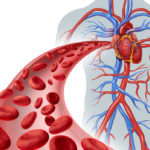After surgery, you are cared for in an intensive care unit for the first 24 to 48 hours. As you recover, you are transferred to a ward and attended by specially trained nurses and physiotherapists until you are ready for discharge. Your physiotherapist will start you on a simple exercise program, including deep breathing exercises and coughing. Coughing and exercise reduce the risk of pneumonia and improve your circulation. Drainage tubes in the chest are removed in one to two days. You are discharged from hospital when your surgeon is satisfied with your progress.
Most people need about three months to recover completely. Those who work in non-physical jobs may be able to return to work in six to 12 weeks. To help your recovery, gradually increase your activity. Most patients are encouraged to join a rehabilitation exercise program. Do not lift heavy weights (including small children) or drive until approved by your doctor.
After heart valve surgery, patients report a variety of problems that usually resolve, such as tiredness, blurred vision, nausea, poor appetite, poor concentration, memory loss, constipation or sleep disturbances.
There have been significant advances in pain relief after heart valve surgery in recent years and a variety of methods are available. Discuss this with your anaesthetist. After the first few days, tablets (such as paracetamol and codeine) are usually sufficient.
To improve your health and well being, eat healthy foods, lose excess weight, exercise regularly (under your doctor’s supervision) and do not smoke.
ANTICOAGULANT OR “BLOOD THINNING” DRUGS
Anticoagulant drugs reduce the risk of blood clots forming on the surface of a mechanical or tissue valve, and prevent a mechanical valve from sticking or jamming. The most commonly used anticoagulant is warfarin (Coumadin), which is taken orally once a day. Initially, the dose is adjusted every second day based on the result of a blood test to measure clotting time (called the INR). Once the correct dose is established, the test is done weekly and finally monthly. The dose varies from person to person and may vary in the same person, often depending on diet.
Patients with a mechanical valve have to take warfarin permanently. Those with a tissue valve may be able to stop taking warfarin in six to 12 weeks.
The main side effect of warfarin is bleeding, which can be life threatening. This is unlikely to occur if the correct dose is taken. However, notify your doctor immediately if you have any of these symptoms:
- bleeding from a cut or wound that does not stop by itself
- nosebleeds
- bleeding gums from brushing
- red or black, tarry stools
- blood-stained urine
- any unusual symptoms such as pain, swelling or discomfort.
You should wear a medical alert bracelet stating that you are taking anticoagulant medication. To determine a patient’s level of anticoagulation (or INR), testing kits are available. They must be used under close medical supervision and are not suitable for everyone.



